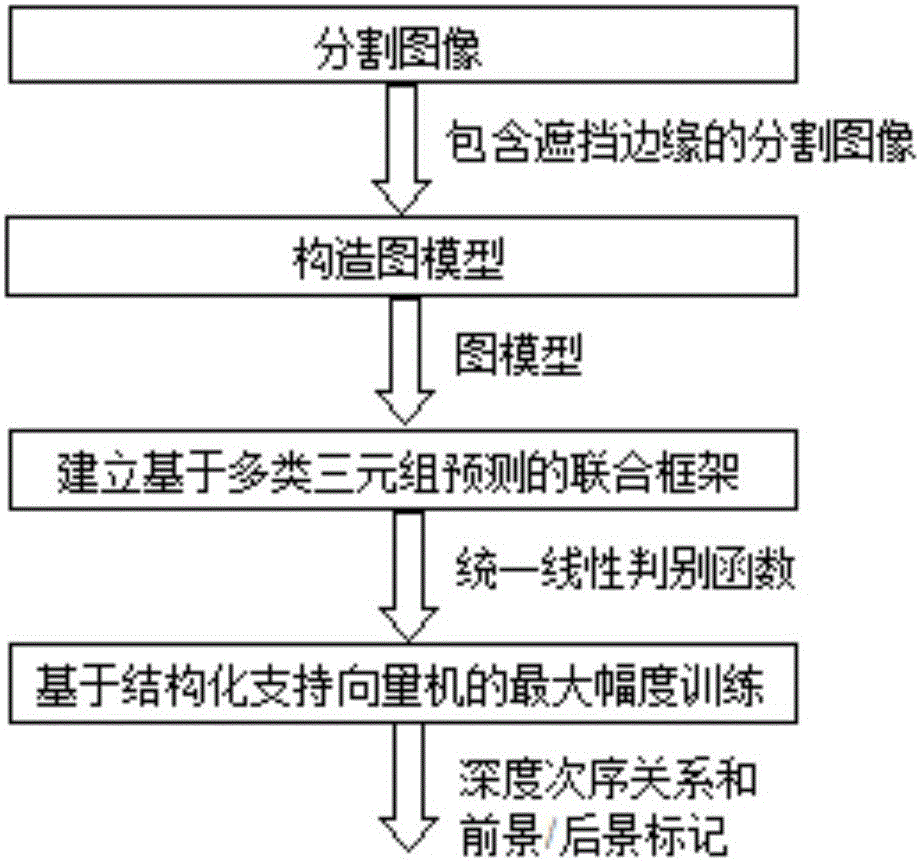Combined learning method for foreground region marking and depth order inferring
A technology of depth order and foreground area, applied in the field of image processing, can solve the problems of influence effect, failure to reflect connection, lack of robustness of the system, etc., to achieve the effect of improving effectiveness
- Summary
- Abstract
- Description
- Claims
- Application Information
AI Technical Summary
Problems solved by technology
Method used
Image
Examples
Embodiment Construction
[0030] The preferred embodiments of the present invention will be described below in conjunction with the accompanying drawings. It should be understood that the preferred embodiments described here are only used to illustrate and explain the present invention, and are not intended to limit the present invention.
[0031] Such as figure 1 As shown, this technical solution is mainly explained from the following four steps: segmenting the image, constructing a graph model, establishing a joint framework based on multi-class triplet prediction and maximal amplitude training based on a structured support vector machine.
[0032] 1. Segment the image:
[0033] First, the image is segmented at the object level, that is, the occlusion boundary between object regions is preserved, and the region and boundary feature vectors are extracted for later speculation. On the one hand, regional features include color, texture, location, and shape features. Besides, visual word features are u...
PUM
 Login to View More
Login to View More Abstract
Description
Claims
Application Information
 Login to View More
Login to View More - R&D
- Intellectual Property
- Life Sciences
- Materials
- Tech Scout
- Unparalleled Data Quality
- Higher Quality Content
- 60% Fewer Hallucinations
Browse by: Latest US Patents, China's latest patents, Technical Efficacy Thesaurus, Application Domain, Technology Topic, Popular Technical Reports.
© 2025 PatSnap. All rights reserved.Legal|Privacy policy|Modern Slavery Act Transparency Statement|Sitemap|About US| Contact US: help@patsnap.com



